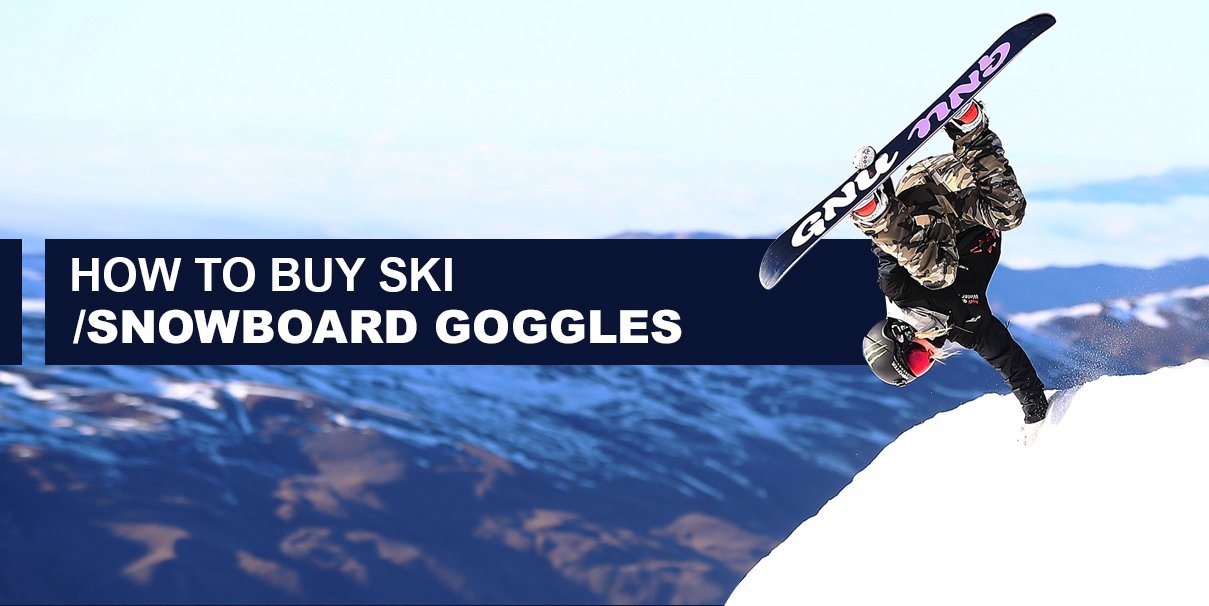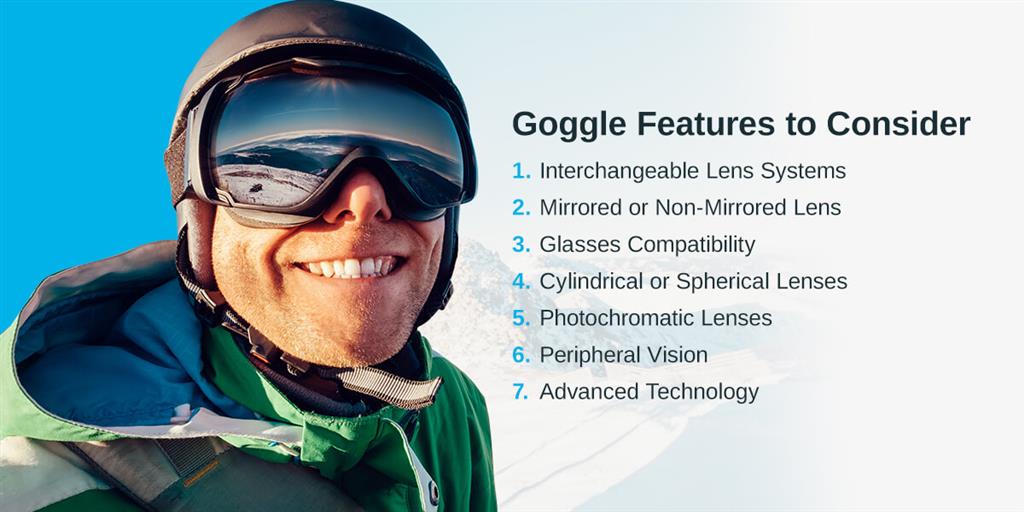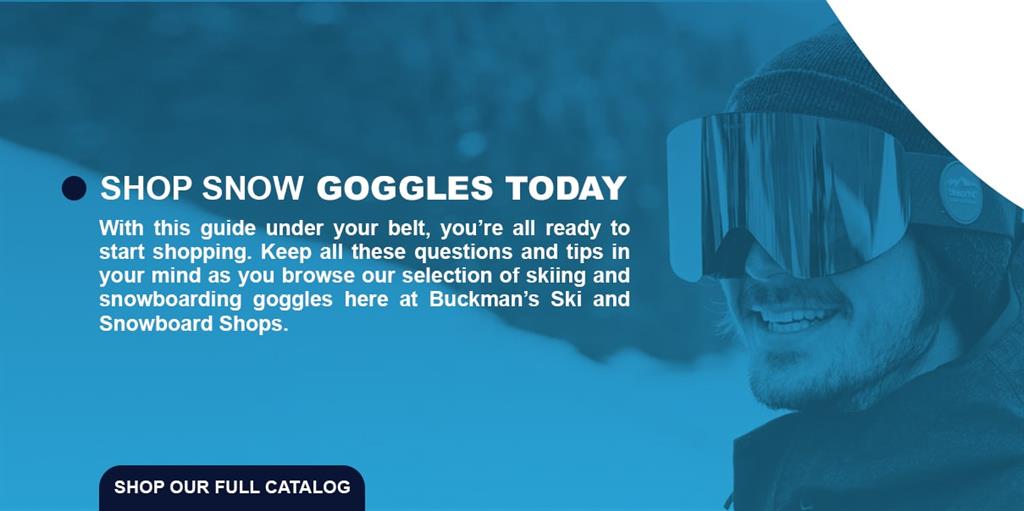 how to buy ski goggles
how to buy ski goggles
How to Buy Ski and Snowboard Goggles
Posted
by
Matt Gahman
on Friday, May 19, 2023
Planning on hitting the slopes this winter with your favorite snowboard or pair of skis? If so, there’s a lot of equipment you should have. You’ll want warm winter gear, such as coats, socks, gloves, hats and under-layers. You’ll want a helmet and sturdy boots. One of the essential items you’ll need; however, is a reliable pair of goggles.
Whether you’re a passionate skier who tries to get out on the slopes every weekend or a more casual hobbyist who only snowboards once or twice a season, you’ll still need a pair of goggles.
Goggles are crucial because they protect your eyes from snow and wind and maintain a clear field of vision, so you can see better even as you hurtle down a hill amidst flying snow and ice. After all, how much fun can you truly have if you can’t even see where you’re going? This type of experience can be both frightening and downright dangerous.
To help you have the safest and most fun experience with your skiing and snowboarding this winter, we will walk you through the process of how to buy ski goggles. We’ll talk about all-important subjects such as what factors you should consider, different features available and, of course, different models you might want to choose.
Questions to Consider When Buying Ski Goggles
Buying goggles can seem intimidating, especially if you’ve never done it. After all, a quick internet search will reveal that there are hundreds of different options out there. How in the world can you be expected to know which one is best?
The simple answer is that no one pair is “best.” Instead, a more productive question is which pair is best for you. To do that, you’ll need to ask yourself the right questions to narrow down your search.
With this in mind, here are a few of the questions you should be asking:
1. Do You Wear a Helmet?
This question is excellent to start with, as different types of goggles are suited to each side of this situation. The design of some goggles fits better with helmets than others do.
It’s worth noting that if you typically wear a helmet, you’ll want to bring this and wear it as you try on goggles. This way, you can ensure that your new goggles will fit well with your favorite helmet. (Side note...we recommend that you wear a helmet!)
2. How Often Do You Ski or Ride?
If you only get out once or twice a season, it probably won’t be necessary to buy the most expensive goggles or the models with the most features. If, on the other hand, this is something you do a lot, it will likely be worth the investment to select a slightly more expensive model because of all the extra features and benefits you’ll receive.
3. Where Do You Primarily Ski or Ride?
Are your slopes of choice in the East, the West or somewhere else? You may find that your needs are slightly different depending on your answer, due to differing weather conditions.
4. What Time of Day Do You Ski or Ride?
Do you enjoy flying down the slopes during the day? At night? Maybe a bit of both? Depending on how you answer, you may want to look into different types of goggles. While daytime skiers can get away with more standard gear, nighttime riders may want to look into other lens options to help them see better in the dark.
5. What's Your Budget for Goggles?
If the sky is the limit and you’re willing to spend hundreds of dollars, there are certainly options out there at the very top of the line that offer more bells and whistles than you’ll know what to do with. If, on the other hand, you’re looking to keep things inexpensive, this is certainly an option as well. Decide on a rough budget before you begin browsing, and this will eliminate multiple possibilities right away.
6. Do You Wear Glasses When You Ski or Ride?
If you do, you’ll want to look into more specialized options designed to fit over glasses. If not, your options are more open. A goggle marked OTG (Over The Glasses) means you should have room for your pair of glasses.
Goggle Features to Consider

By asking yourself the previous list of questions, your options should already be starting to narrow. You can likely eliminate many of the possibilities, leaving you with a much more manageable list of models to choose from.
To further reduce the size of this list, it’s time to think about some of the many additional features added to some goggles. As we browse this list of optional features, ask yourself which ones are necessary, which would be nice, and which aren’t important to you. By prioritizing the different features in this way, you’ll get a better idea of which types of snow goggles might be right for you.
The following is a list of many features you’ll encounter when trying to figure out how to buy snowboard goggles. Keep in mind that this list is not comprehensive but does a fair job of representing many of the most popular features out there.
1. Interchangeable Lens Systems
Maybe you ride in a variety of different weather conditions. Maybe you sometimes ride at night, sometimes during the day. Maybe you're going on a trip and expect snowy days and overcast days. Whatever your situation, there may be times when you need a different lens than you would ordinarily use. For those times, it’s handy to have a pair of goggles that allows for an interchangeable lens.
2. Mirrored or Non-Mirrored Lens
This feature has to do with how much light is allowed through the goggles. Typically, a mirrored lens is coated, keeping more light out and letting you see well even when the sun is exceptionally bright. On the other hand, a non-mirrored lens is not coated, thus allowing more light in. This design is more appropriate for lower-light conditions.
3. Glasses Compatibility
If you wear glasses on the slopes, this is a feature that you’ll likely want to take advantage of. Certain types of goggle frames are engineered to be larger than ordinary, allowing them to fit over your glasses. This larger frame lets you keep your prescription lens on and experience the benefits of regular goggles without sacrificing one for the other.
4. Cylindrical or Spherical Lenses
Generally speaking, cylindrical lenses cost a bit less and usually work just fine. However, a spherical lens tends to be better at reducing distortion and giving you more peripheral vision. The trade-off, however, is that they ordinarily cost a bit more. Decide which is more important to you and make your purchase accordingly.
5. Photochromatic Lenses
Do you tend to spend all day on the slopes, starting early in the morning and ending late at night? Or do you prefer heading out in the evenings? If so, then you may want to consider photochromatic lenses. These lenses automatically adjust and let in different amounts of light as the weather conditions change and the sun grows either brighter or dimmer.
6. Peripheral Vision
As previously discussed, spherical goggle lenses often provide more peripheral vision and less distortion than cylindrical options. The only downside is a higher price point.
The size of the goggles and how close they sit to your face may also affect what you can see on the slopes. Some manufacturers create frames that appear larger and offer more peripheral vision. Lenses that sit closer to your eyes can also improve your range of vision by eliminating blind spots around the edges of the frame. The only downside to this design is that it may not always work well for those who wear glasses.
7. Advanced Technology
Another thing to look for when buying ski goggles is technology. Goggle technology continues to improve, creating a better experience on the slopes. Most technologically advanced goggles improve your vision. Some let in blue light to help those who struggle to see the terrain on cloudy days. Other options let you adjust your goggle tint without switching lenses. Some have the technology for better distinguishing between colors on the slopes.
There are also different foam types for more comfort. A multi-density foam provides the most comfortable fit, over single-density options. You can find hypoallergenic foam if your goggles often cause skin irritation, too. Many advanced goggles also have anti-fog capabilities, including battery-powered fans or heated lenses.
Beginning to Shop: Goggle Lens Buying Guide
Between the questions to ask yourself and the potentially available features, you should start to have a clearer idea of what it is you’re looking for. At the very least, you should be more aware of what you aren’t looking for, leaving you with a much smaller number of options to sort through in the meantime.
As you shop, remember to try your goggles on before you buy them. Even better, try them on with your helmet. Make sure they’re comfortable and aren’t poking you or digging in anywhere. There’s nothing worse than buying a pair and discovering too late that they don’t fit well.
Categories of Goggles to Consider
Here are a few categories to narrow your choices even further:
1. Basic Goggles
If you’re a skier or boarder who only gets out a few times a year, you might want to consider a cylindrical lens that works well in most normal conditions. A few specific options to consider include:
- Smith Range or Driftw/RC36 Lens: These no-nonsense goggles have everything you need to get started without breaking your budget on extra features. Enjoy clear vision, anti-fogging features and a thick strap that will keep these goggles secured on your head with or without a helmet.
2. Midrange Goggles
The next level up, if you ride more, would be goggles with a cylindrical lens and a few additional features. Your goggles might even offer multiple lenses, depending on the style you choose. A few models at this level are:
- Smith Squad with Chromopop and Yellow Lens: Offering a great price without sacrificing on functionality, these goggles offer one Chromopop lens and another secondary lens for lower light conditions. This makes it an excellent choice if you’re looking for a low-light ski goggles lens.
- Oakley Line Miner with Prizm Lens: If you’re looking for the ultimate peripheral vision, look no further than the Oakley Line Miner. The sharp, cylindrical design of these goggles lets them rest closer to your face than ever, effectively widening your field of vision by an unprecedented margin.
3. Premium Goggles
At the third level up, your goggles will become more sophisticated. Here, you’ll find some of the best snow goggles for low visibility, and spherical-shaped lenses for less distortion and clearer views. While the prices certainly reflect these more advanced upgrades, the cost is well worth it, especially if you ride or ski frequently during the winter. A few models to consider at this level include:
- Smith I/0 Series with Chromopop Lenses: Experience the difference with this close-fitting spherical lens, two different Chromopop lenses for maximum definition and clarity and the highest levels of anti-fogging technology.
- Oakley Flight Deck with Prizm Lens: These goggles are designed to fit snugly under most helmets while also allowing for fast, easy and convenient lens changing so that you can spend less time fiddling with your goggles and more time tearing up the slopes.
4. Goggles for Glasses Wearers
Do you usually wear your glasses while you enjoy a long day of winter sports? If so, you’ll want to shop for goggles to fit over glasses.
5. High-Tech Goggles
If you’re interested in the latest technological developments, you might be interested in trying out goggles that can adjust their tinting automatically, lightening or darkening at the simple touch of a button.
- Line Miner Inferno: The most affordable option in this category, these are a great choice if you want to try this technology but aren’t willing to invest much money into it.
Additional Tips for Choosing Ski and Snowboard Goggles
You're almost ready to start shopping for a new pair of goggles. Here are a few extras tips to keep in mind as you start browsing to complete our guide to buying ski and snowboard goggles.
Don't Decide Just Based on Appearance
You may be tempted to select a pair because it looks good with your helmet or matches your jacket, but remember to focus on features first and looks second. For example, a dark lens may make it difficult to see on dim days. While it might look great in the shop, it could make skiing or snowboarding more difficult.
Try Goggles on With Your Helmet
Goggles have different frames and straps, which means not every pair fits with every helmet. Have your helmet while you shop to make sure the two are compatible. Pay special attention to whether they curve on top and what the buckle on the back looks like. A curved pair of goggles might not fit under a flat helmet, and a large buckle might make securing the goggles to your helmet difficult.
Take Care of Your Goggles for Longer Wear
Keep your goggles looking brand-new and prepare them for long-term use by caring for them. Shopping for new gear might be fun, but you want to limit the number of times you do it. You can keep your goggles in good condition for longer by keeping them in a protective bag and storing them in a temperature-controlled area. You can also replace the strap when it stretches out to avoid buying new ski goggles.

Shop Snow Goggles Today
With this guide under your belt, you’re all ready to start shopping. Keep all these questions and tips in mind as you browse our selection of skiing and snowboarding goggles here at Buckman’s Ski and Snowboard Shops. Whether you’re looking for top-of-the-line options or just something inexpensive for a one-time trip, we have something for you.
Show off your newfound knowledge of snow goggles and get busy shopping our full catalog today.
Categories:
Ski equipment
|
Snowboard Equipment